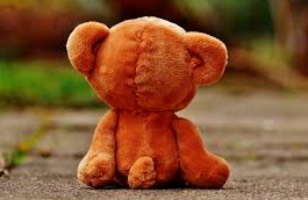Summary
This lesson uses fiction and nonfiction books to have students think about the author’s purpose for writing the piece. The goal is to help students understand that nonfiction works have common elements with the purpose to inform, while fiction stories have common elements with the purpose to entertain. Students will gain experience discerning an author's purpose for writing and will practice their own writing with the goal to either inform or entertain their audience.
Essential Question(s)
Why did the author write this piece?
Snapshot
Engage
The class reads "The Mitten" and engages in a discussion about the author's purpose in writing.
Explore
Students compare and contrast a book that was written to entertain and a book that was written to inform.
Explain
Students collaboratively build a T-Chart with characteristics of fiction/entertainment and non-fiction/informational books.
Extend
Students choose to write an informational or entertaining response to a picture writing prompt.
Evaluate
Students evaluate different texts to determine whether the author's purpose is to entertain or to inform.
Materials
"The Mitten" by Jan Brett book or video read-aloud
Nonfiction book about bears, such as "Brown Bears" by Cari Meister
Bear Writing handout (attached)
Sticky notes
Engage
Read aloud "The Mitten" by Jan Brett (or watch a read-aloud video of the story). After reading the story, ask students, "Why do you think the author wrote this story?" "What do you think the author wanted you to feel?" "What do you think the author wanted you to learn?" Discuss as a class.
Explore
Explain that authors have different purposes. Ask students to think about why the author wrote "Brown Bear" by Cari Meister as you read the nonfiction book about bears aloud. Using the Think-Pair-Share strategy, have students consider the question, “Why did the author write this piece?"
Draw a Venn diagram on the board. In a whole-class discussion, have students compare and contrast the two books by filling in the diagram. If students need help, have them think about factors such as who or what the book is about, the setting, and how the story is told.
As a class, discuss the following questions:
Are the author’s purposes the same or different?
What is the author’s purpose for each piece?
Explain
Create a T-Chart on the board with the labels "Inform" and "Entertain" at the top. Explain that informational books are often nonfiction. Explain that entertainment books are often fiction. Add "Fiction" and "Nonfiction" labels to the chart as well.
Provide students with a stack of familiar classroom books. Ask the students to sort the books into the fiction/entertainment pile or the nonfiction/informational pile.
Using a sticky note, have each student share one thing that they think the fiction/entertainment books have in common. Ask students to come up to the board and place the sticky notes under the fiction/entertainment part of the T-Chart.
Possible answers:
Characters
Setting
Beginning, middle, and end (plot)
Needs to be read in a particular order
Repeat the process for informative books. Using a sticky note, have each student share one thing that they think the nonfiction/informative books have in common. Ask students to place the sticky notes under the nonfiction/inform column.
Possible answers:
Can read from any page
Do not have to be read from beginning to the end
May have bold words
May have a glossary
May have an index
May have captions, diagrams, charts, photographs, or labels
Extend
Students will use the Gallery Walk strategy as they look at three to five books or brief pieces of writing placed around the room. Students will determine if the author's purpose is to entertain or inform. Ask students to write their decision on a sticky note along with an explanation of their reasoning. Students will leave their sticky notes next to the book or writing sample.
After students have practiced identifying elements that characterize informational and entertainment writing, leave their sticky notes on the board to use as a reference for the next activity in which they will write a short story to entertain or inform.
Evaluate
Using what they have learned so-far about author’s purpose, ask students to look at the bear picture in the attached Bear Writing handout and write a short story to either entertain or inform. Students should circle their choice (Entertain or Inform) on the handout and write their story in the space to the right.
Resources
Brett, J. (1989). The mitten. New York: G. P. Putnam's Sons.
K20 Center. (n.d.). Gallery walk / carousel. Strategies. https://learn.k20center.ou.edu/strategy/118
K20 Center. (n.d.). T-Chart. Strategies. https://learn.k20center.ou.edu/strategy/86
K20 Center. (n.d.). Venn diagram. Strategies. https://learn.k20center.ou.edu/strategy/2918
Meister, C. (2015). Brown bears. Minneapolis: Bullfrog Books.
Nook. (2014, Jan. 30). Online storytime: The mitten [Video]. YouTube. https://www.youtube.com/watch?v=d3rRWzdHv5M


